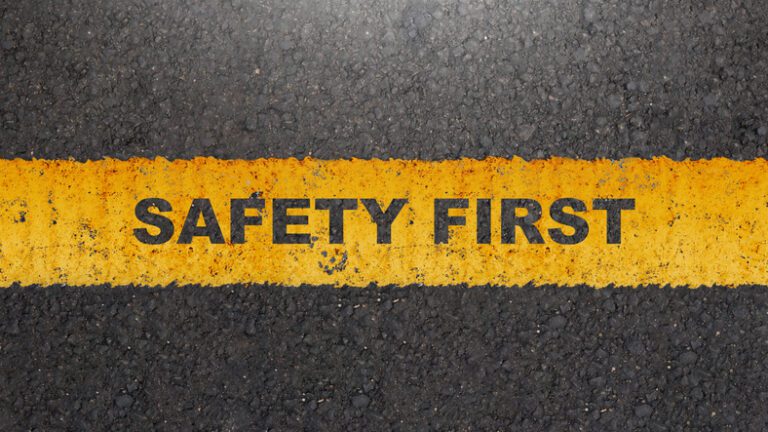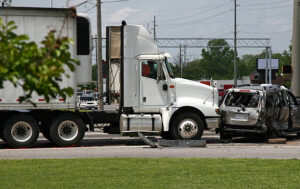While it may seem strange to find a story about defensive driving under the heading of “Job Resources,” it actually makes complete sense when you think about it. After all, a driver’s safety record is a critical item on most motor carriers’ list of qualifications.
The best drivers count their driving skills as one of their most important resources — and it’s a resource that individuals can control. This is one area where you can work to improve your skills at little to no cost — and you don’t have to be actively driving to do so. You can find time to research and study best practices while waiting to load or unload, for your vehicle to be repaired or for your next dispatch.
The most important factor in driving defensively is your mindset, in particular, your system of values. Plenty of drivers can repeat all the safety cliches and rattle off the Five Keys of the Smith System, but it takes commitment to put those things into action every mile. It’s easy to let safety take a back seat to another priority, such as trying to make up time when you’re behind schedule.
The safest drivers don’t allow themselves to get in a hurry when things aren’t going well. Those anxious customers and authoritarian fleet managers are not in your truck, and they don’t have the knowledge of your current situation that you do. Drivers who are under stress might find it tempting to drive faster or make frequent lane changes, or even to follow another vehicle too closely in an effort to arrive on time.
By setting boundaries for yourself and not allowing others to dictate the way you drive, you can keep your risk of an accident as low as possible — and you’ll enjoy your workday more, too.
Every truck driver knows that many accidents involving small vehicles and trucks are caused by the driver of the smaller vehicle. While this is not always the case, you’ll often hear trucks talk about “those pesky four-wheelers.” The reality, however, is that those four-wheelers are driven by people. It might be your spouse/partner, your parents, your kids — someone you know and love drives a four-wheeler.
Another reality is that some of the people behind the wheels of those four-wheelers (and even some other truckers) don’t have your level of driving skill or your commitment to safety. By watching out for them and making decisions that keep you and your vehicle out of accidents, you can help protect everyone.
Defensive driving must be about more than defending yourself; the goal is to help other motorists get home safely too.
Here’s an example. Changing lanes often has a ripple effect. Vehicles behind you may also change lanes, trying to get to the fastest lane or to set themselves up for an upcoming exit. When you change lanes, others do too — and some may not be as careful as you are. Your lane change may not be the direct cause of an accident that occurs behind you, but your actions may have contributed to the chain effect. Some lane changes are necessary, of course. Frequent lane changes, however, add to the risk of accidents and usually don’t save much time in the long run.
Turning in front of other vehicles, assuming they’ll see you and slow down or stop is another action that often results in an accident. Sometimes, they DON’T see you. Maybe it’s their fault; perhaps they were looking at a phone or yelling at the kids or whatever — but that doesn’t matter much when the ambulance arrives. The amount of travel time you saved by not waiting for a safer opportunity to make that turn won’t matter, either.
By thinking of what other motorists might do, right or wrong, you can make safer driving decisions.
Many drivers have been exposed to safety training at various points in their careers. Some receive training in CDL schools or during an orientation class when joining a new carrier. For some, it’s an orientation or two every year, going back a long time. Some drivers receive regular safety training during monthly or quarterly meetings. But drivers who don’t work for a carrier or work for one with a poor or nonexistent training program can still receive at least some training.
An internet search for “commercial vehicle safety training” or “defensive driving” returns an assortment of providers of online video training. There are a host of free training videos available on YouTube, some put out by well-known and reputable industry sources such as J.J. Keller. The National Safety Council, the originator of defensive driving courses, offers online training at a reasonable cost.
One company, Safety as a Service, offers free training videos to carriers that employ five or fewer drivers. The videos aren’t lengthy and cover multiple safety topics.
Other training providers market subscription services to larger carriers, but it’s worth a phone call or email to find out if their products are available to owner-operators or solo drivers.
The best courses offer a certificate of completion for your records. If you paid for the training, a receipt also helps show your participation. Even without proof, however, a simple log of videos you’ve reviewed, including the date, time and URL (internet address) of the video is better than no record at all.
Having a record of safety training, even if you’re running a one-truck outfit, can provide benefits. A record of training might provide an assist in negotiations with your insurance company. If you’re called into court to argue a citation or defend yourself in a civil action, that record of training helps show you make a conscious effort to keep your safety and defensive driving skills well-honed. Some shippers and brokers check CSA scores and safety records when selecting a carrier, so safety training can be beneficial here as well.
But even if you don’t gain any of those benefits, you’ll still benefit. By taking advantage of opportunities to increase your safety knowledge — or just refresh training you’ve already received — you’ll help make sure your driving skills are as good as they can be. And that’s a benefit to everyone you share the road with.
Cliff Abbott is an experienced commercial vehicle driver and owner-operator who still holds a CDL in his home state of Alabama. In nearly 40 years in trucking, he’s been an instructor and trainer and has managed safety and recruiting operations for several carriers. Having never lost his love of the road, Cliff has written a book and hundreds of songs and has been writing for The Trucker for more than a decade.







